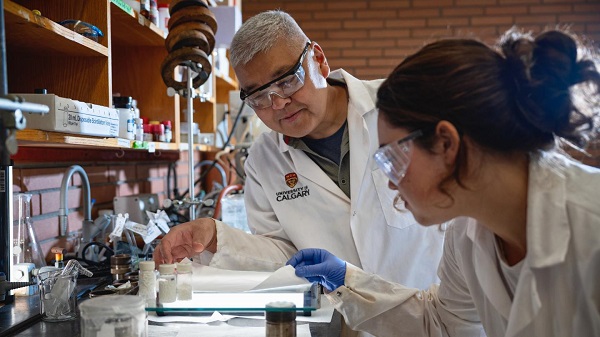Energy
Federal government’s ’carbon-free’ electricity target far-fetched

From the Fraser Institute
By Elmira Aliakbari and Jock Finlayson and Tegan Hill
A recent report by the Canada West Foundation, which analyzed 25 major projects that entered the federal government’s review process between 2019 and 2023, found that all 25 were still stuck in the early stages (phase 1 or 2) of the four-phase process.
Did you know that the Trudeau government wants to “decarbonize” Canada’s electricity generation by 2035? That is, make carbon-free sources (e.g. wind, hydro and solar) the sole power source for electricity generation in Canada.
Is this possible? No.
As of 2023 (the latest year of available data), nearly 81 per cent of Canada’s electricity came from carbon-free sources. To replace the remaining 19 per cent that relies on fossil fuels over the next 10 years, Canada would need to add a massive amount of generation capacity.
Specifically, we would need approximately 23 new large hydroelectric dams similar in size to British Columbia’s Site C project. Of course, due to regulatory hurdles and approval processes, it takes a long time to plan and construct major electricity generation facilities in Canada. The Site C project took approximately 43 years (from initial feasibility and planning studies in 1971) to secure environmental certification in 2014. Construction finally began on the Peace River in northern B.C. in 2015 with completion expected in 2025—at a cost of at least $16 billion.
Alternatively, we would need more than two large scale nuclear power plants the size of Ontario’s Bruce Power, which took nearly two decades to complete with billions of dollars in cost overruns.
Or we’d need approximately 11,000 new large wind turbines, which would require clearing approximately 7,302 square kilometres of land (that’s larger than Prince Edward Island and nearly nine times larger than Calgary). The new turbines would also require substantial investments in backup power systems due to the wind’s intermittency, which of course would further drive-up costs across the electricity system.
And remember, as Canada’s population grows, electricity demand will increase significantly. The infrastructure mentioned above would only decarbonize Canada’s current electricity needs, without accounting for the additional capacity required to meet future demand.
And yet, despite its aggressive plan to decarbonize, the Trudeau government in 2019 introduced the Impact Assessment Act (IAA)—also known as Bill C-69—which added layers of uncertainty and complexity to project reviews. A recent report by the Canada West Foundation, which analyzed 25 major projects that entered the federal government’s review process between 2019 and 2023, found that all 25 were still stuck in the early stages (phase 1 or 2) of the four-phase process.
In other words, while Ottawa’s electricity decarbonization plan requires an unprecedented wave of new energy projects, the government’s own regulatory regime will make it harder for new projects to get off the ground.
The total costs of the federal government’s plan are incalculable. But we do know who will get hurt the most. Three provinces—Alberta, Saskatchewan and Nova Scotia—depend most heavily on fossil fuels to generate electricity. In Alberta, approximately 85 per cent of electricity comes from fossil fuels, mainly natural gas, while carbon-free sources generate only 15 per cent. Clearly, Alberta and these other provinces will face the greatest challenges—and heaviest burdens—in decarbonizing their grids.
In light of the basic realities of project construction timelines, regulatory hurdles and the massive financial investment required, the Trudeau government’s target to achieve 100 per cent fossil fuel-free electricity by 2035 is far-fetched. But the costs of pursuing that target will be very real and felt by all Canadians, with the size of the costs depending largely on where you live.
Authors:
Alberta
Nobel Prize nods to Alberta innovation in carbon capture

From the Canadian Energy Centre
‘We are excited to bring this made-in-Canada innovation to the world’
To the naked eye, it looks about as exciting as baking soda or table salt.
But to the scientists in the University of Calgary chemistry lab who have spent more than a decade working on it, this white powder is nothing short of amazing.
That’s because the material they invented is garnering global attention as a new solution to help address climate change.
Known as Calgary Framework-20 (CALF-20 for short), it has “an exceptional capacity to absorb carbon dioxide” and was recognized in connection with the 2025 Nobel Prize in Chemistry.
“It’s basically a molecular sponge that can adsorb CO2 very efficiently,” said Dr. George Shimizu, a UCalgary chemistry professor who leads the research group that first developed CALF-20 in 2013.
The team has been refining its effectiveness ever since.
“CALF-20 is a very exciting compound to work on because it has been a great example of translating basic science into something that works to solve a problem in the real world,” Shimizu said.
Advancing CCS
Carbon capture and storage (CCS) is not a new science in Alberta. Since 2015, operating projects in the province have removed 15 million tonnes of CO2 that would have otherwise been emitted to the atmosphere.
Alberta has nearly 60 proposed facilities for new CCS networks including the Pathways oil sands project, according to the Regina-based International CCS Knowledge Centre.
This year’s Nobel Prize in Chemistry went to three of Shimizu’s colleagues in Japan, Australia and the United States, for developing the earliest versions of materials like CALF-20 between 1989 and 2003.
Custom-built molecules
CALF-20 is in a class called metal-organic frameworks (MOFs) — custom-built molecules that are particularly good at capturing and storing specific substances.
MOFs are leading to new technologies for harvesting water from air in the desert, storing toxic gases, and capturing CO2 from industrial exhaust or directly from the atmosphere.
CALF-20 is one of the few MOF compounds that has advanced to commercial use.
“There has been so much discussion about all the possible uses of MOFs, but there has been a lot of hype versus reality, and CALF-20 is the first to be proven stable and effective enough to be used at an industrial scale,” Shimizu said.
It has been licensed to companies capturing carbon across a range of industries, with the raw material now being produced by the tonne by chemical giant BASF.
Carbon capture filter gigafactory
Svante Inc. has demonstrated its CALF-20-based carbon capture system at a cement plant in British Columbia.
The company recently opened a “gigafactory” in Burnaby equipped to manufacture enough carbon capture and removal filters for up to 10 million tonnes of CO2 annually, equivalent to the emissions of more than 2.3 million cars.
The filters are designed to trap CO2 directly from industrial emissions and the atmosphere, the company says.
Svante chief operating officer Richard Laliberté called the Nobel committee’s recognition “a profound validation” for the entire field of carbon capture and removal.
CALF-20 expansion
Meanwhile, one of Shimizu’s former PhD students helped launch a spinoff company, Existent Sorbents, to further expand the applications of CALF-20.
Existent is working with oil sands producers, a major steel factory and a U.S.-based firm capturing emissions from other point sources, said CEO Adrien Côté.
“The first users of CALF-20 are leaders who took the risk of introducing new technology to industries that are shrewd about their top and bottom lines,” Côté said.
“It has been a long journey, but we are at the point where CALF-20 has proven to be resilient and able to survive in harsh real-world conditions, and we are excited to bring this made-in-Canada innovation to the world.”
Business
Bill Gates walks away from the climate cult

Billionaire Bill Gates — long one of the loudest voices warning of climate catastrophe — now says the world has bigger problems to worry about. In a 17-page memo released Tuesday, the Microsoft co-founder called for a “strategic pivot” away from the obsessive focus on reducing global temperatures, urging leaders instead to prioritize fighting poverty and eradicating disease in the developing world. “Climate change is a serious problem, but it’s not the end of humanity,” Gates wrote.
Gates, 70, argued that global leaders have lost perspective by treating climate change as an existential crisis while millions continue to suffer from preventable diseases like malaria. “If I had to choose between eradicating malaria and preventing a tenth of a degree of warming, I’d let the temperature go up 0.1 degree,” he told reporters ahead of next month’s U.N. climate conference in Brazil. “People don’t understand the suffering that exists today.”
For decades, Gates has positioned himself as a leading advocate for global climate initiatives, investing billions in green energy projects and warning of the dangers of rising emissions. Yet his latest comments mark a striking reversal — and a rare admission that the world’s climate panic may have gone too far. “If you think climate is not important, you won’t agree with the memo,” Gates told journalists. “If you think climate is the only cause and apocalyptic, you won’t agree with the memo. It’s a pragmatic view from someone trying to maximize the money and innovation that helps poor countries.”
The billionaire’s change in tone is sure to raise eyebrows ahead of the U.N. conference, where climate activists plan to push for new emissions targets and wealth transfers from developed nations. Critics have long accused Gates and other elites of hypocrisy for lecturing the public about fossil fuels while traveling the globe on private jets. Now, Gates himself appears to be distancing from the doomsday rhetoric he once helped spread, effectively admitting that humanity faces more immediate moral imperatives than the weather.
(AP Photo/Alex Brandon)
Stunning Climate Change pivot from Bill Gates. Poverty and disease should be top concern.
-

 Business1 day ago
Business1 day agoYou Won’t Believe What Canada’s Embassy in Brazil Has Been Up To
-

 Censorship Industrial Complex1 day ago
Censorship Industrial Complex1 day agoSenate Grills Meta and Google Over Biden Administration’s Role in COVID-Era Content Censorship
-

 Business23 hours ago
Business23 hours agoMystery cloaks Doug Ford’s funding of media through Ontario advertising subsidy
-

 Crime11 hours ago
Crime11 hours agoPublic Execution of Anti-Cartel Mayor in Michoacán Prompts U.S. Offer to Intervene Against Cartels
-

 Automotive1 day ago
Automotive1 day agoCarney’s Budget Risks Another Costly EV Bet
-

 International10 hours ago
International10 hours agoNigeria better stop killing Christians — or America’s coming “guns-a-blazing”
-

 Environment19 hours ago
Environment19 hours agoThe era of Climate Change Alarmism is over
-

 Aristotle Foundation11 hours ago
Aristotle Foundation11 hours agoB.C. government laid groundwork for turning private property into Aboriginal land















